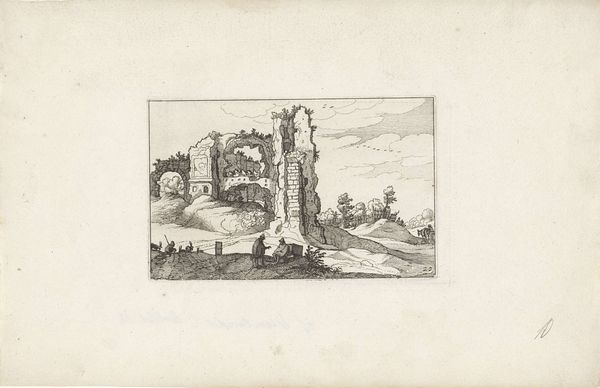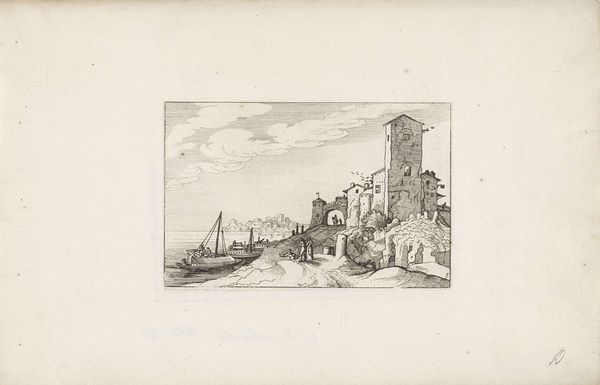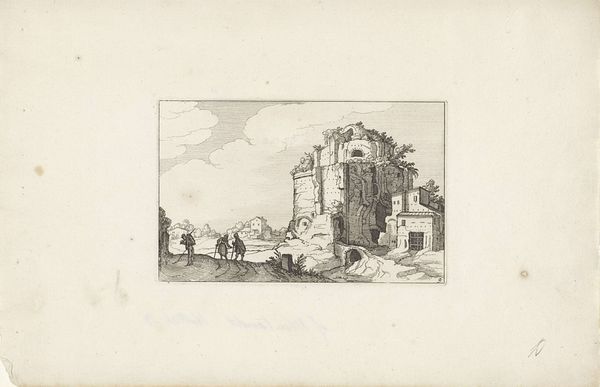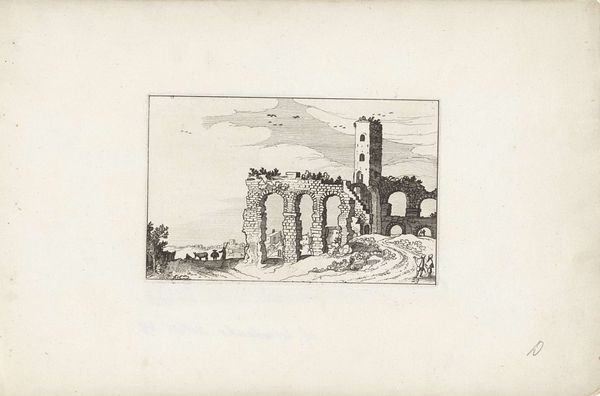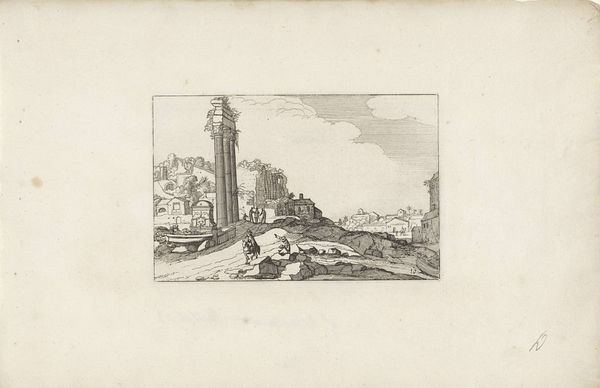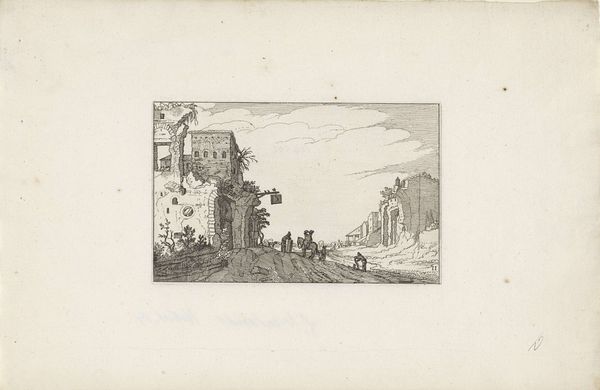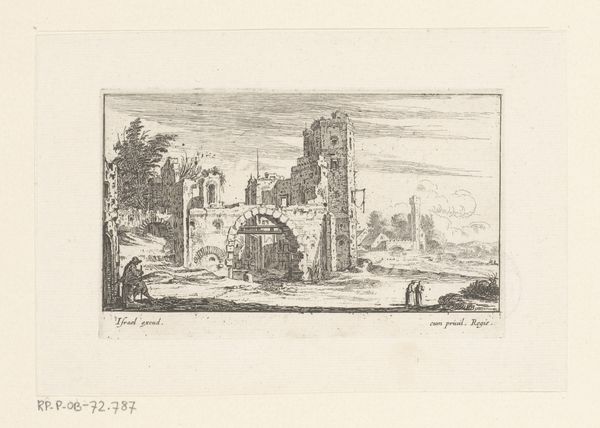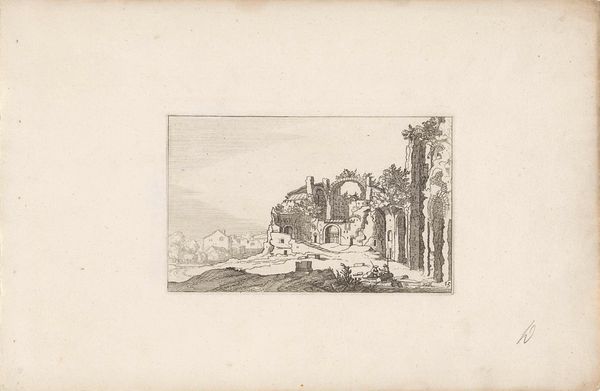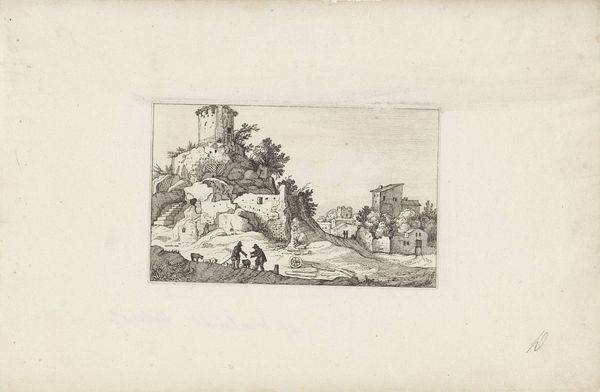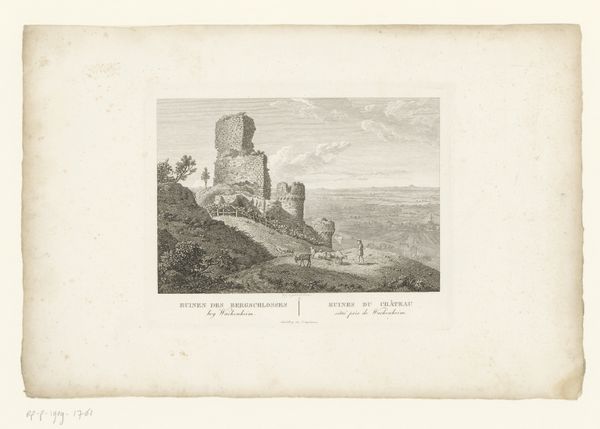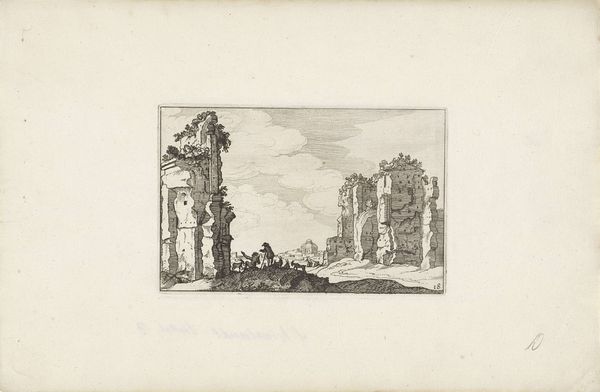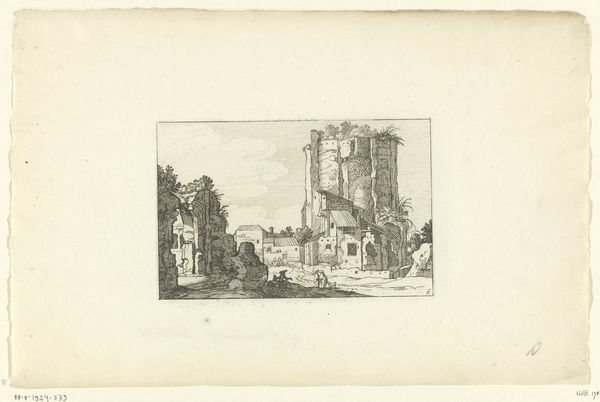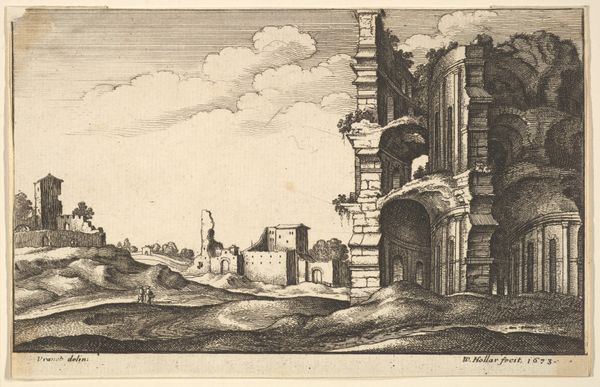
print, etching
#
baroque
#
dutch-golden-age
# print
#
etching
#
landscape
#
perspective
#
line
#
cityscape
Dimensions: height 100 mm, width 156 mm
Copyright: Rijks Museum: Open Domain
Curator: Immediately striking is the contrast between the crumbling structures in the foreground and the delicate cityscape beyond, almost ethereal in its rendering. Editor: That etching has a distinct coolness to it. The stark lines almost feel brittle, echoing the ruinous structures dominating the composition. It definitely leans into the picturesque decay so favored at the time. Curator: Indeed. This is "View of Rome from the Pincio" by Claes Jansz. Visscher, dating to 1618. He employs line in a way that meticulously models form. It’s Baroque, with influences from the Dutch Golden Age tradition. Look at how skillfully he establishes depth and perspective through the varied density of lines. Editor: As an etching, the line work makes complete sense as an aesthetic strategy for printmaking. But look how Visscher captures a kind of cultural consumption. We are meant to marvel at Rome's architecture while literally standing atop remains. It raises the question: is the artistry in the buildings themselves, or is the print serving to sell an exotic landscape? Curator: A pertinent point. Notice the strategic placement of figures—perhaps tourists themselves—mediating between ruin and Renaissance. Consider also the sky. Visscher subtly captures the atmospheric effects that guide the viewer's eye from the earthly ruins to the spiritual dome, further enhancing perspective. Editor: You are making me appreciate how labor-intensive the printmaking was for Visscher. Etchings took time. With each stroke, a cultural valuation took place. Each print became a form of property for the Dutch viewer to consider Rome. I think it gives real insight into class and power in the early 17th century. Curator: An insightful perspective on Visscher’s process. It is not merely representational. There’s certainly something symbolic about that dynamic space he creates, with layers of meaning embedded in his skilled manipulation of line and form. Editor: I find I now see this cityscape in a different light, a carefully crafted commentary on the ephemeral nature of architectural authority that is not always visible. The artist created so much by manipulating these very basic raw materials and his craft, transforming them into something imbued with potent sociopolitical ideas.
Comments
No comments
Be the first to comment and join the conversation on the ultimate creative platform.
